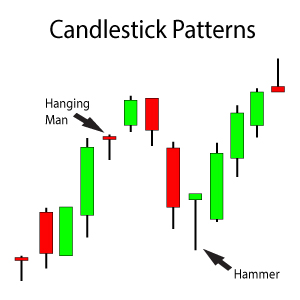Microsoft (MSFT) Stock Chart Analysis
 This article is a Microsoft (MSFT) stock chart review and analysis. Before the review though, let’s reminisce. I was a Microsoft user since 1988 and have used just about every operating system they have offered from then until Windows XP. Hands down, Windows XP was the best Microsoft operating system that I used.
This article is a Microsoft (MSFT) stock chart review and analysis. Before the review though, let’s reminisce. I was a Microsoft user since 1988 and have used just about every operating system they have offered from then until Windows XP. Hands down, Windows XP was the best Microsoft operating system that I used.
Back in 1988, I remember going in and adjusting DOS commands. The 2 megabytes of motherboard memory just wasn’t enough for some of my newer games, particularly this new dungeons and dragons type game which lasted several semesters up at school.
Yes, that was megabytes I mentioned previously, not gigabytes. And 2 megabytes was quite a bit “back in the day”, but it still couldn’t handle the newer dungeon game I was always inclined to play.
My last windows machine was a 2005 Toshiba laptop. At least, I think it was a 2005. It featured a wide 17″ screen that I liked for gaming. The price was over $2k at the time (I think closer to $3k) as it included the new software package called “Windows Media” software.
It also had a dedicated video card, something most laptops did not have at the time. Dedicated video graphics cards were usually reserved for desktop machines. The laptop had a TV tuner built in along with the ability to DVR shows. However the media software never lived up to its hype in my opinion.
In February 2013, my wife purchased a MacBook laptop for my Christmas and birthday gift combined. I have not used a Microsoft product since. But I will not let that influence my opinion in this Microsoft (MSFT) stock chart analysis and review. Mr. Softy will always hold a special place in my heart from my early computing days. I even still use the above laptop to produce some invoices for my monthly client, the large 5.5 billion dollar pension fund whose monthly financial statements I review.
Enough with my windows background and migration to Apple products, let’s get on to Mr. Softy’s charts!
MSFT – Point & Figure Chart
This first chart is a Point & Figure (P&F) chart for Microsoft. Let’s see what the tic-tac-toe looking charts have to say about any price objectives for MSFT’s share price.
The first chart on the left is based on the share price intra-day highs and lows while the second chart on the right is based on closing share prices only.
The P&F Chart based on share price intra-day highs & lows reflects a bullish price target of $84. The price target for the P&F Chart based on closing share prices is slightly higher, it reflects a bullish price target of $99.
The important take-away from the above P&F charts is that[s2If !current_user_can(access_s2member_level1)]………
If you want to continue reading this Microsoft (MSFT) stock chart review and analysis, you must first login.
I review the upside price targets from the P&F Charts using other methods of technical analysis to see if the lofty price targets can be supported by any other analysis methods. Pullback areas that should provide support in the event of a continued market correction are also reviewed.
If you are not a Trendy Stock Charts member, consider joining today! There are several different subscription plans available.[/s2If][s2If current_user_can(access_s2member_level1)] both charts reflect a bullish price target that is higher than the current share price. Let’s review some other methods of technical analysis and see if either (or both) of the price targets can be supported by other means.
MSFT – Moving Averages Analysis
Since the P&F Charts are bullish, let’s start off with a short-term chart. This is a 1 year daily candlestick Microsoft (MSFT) stock chart. The chart has the 5 common moving average lines I like to analyze:
- 5 Day Moving Average
- 10 Day Moving Average
- 20 Day Moving Average
- 50 Day Moving Average
- 200 Day Moving Average
Price action over the last 3 months has been been pretty tight over the last couple of weeks. It actually appears to be rounding off in what looks like a short-term topping pattern. With earnings coming up, I would guess that MSFT could find its way back towards its 200 Day moving average on any sort of earnings miss or any future guidance that is weaker than anticipated.
MSFT’s share price has not had any re-test of the 200 Day moving average since breaking above the line almost a year ago now. I would not only think that any re-test would be successful, but it would also be a chance to initiate a long position with Microsoft (MSFT).
Let’s review some different chart perspectives for MSFT’s share price and see if they reveal anything. The moving average chart does not seem to confirm the P&F charts unless MSFT is going to rebound from the 50 Day moving average on an earnings beat and guidance better than anticipated. A different chart perspective may provide needed clues.
MSFT – Northern Doji Resistance
Let’s back out the view a little bit and capture a little longer time period. This next chart is a 3 year weekly candlestick Microsoft (MSFT) stock chart. At the top of its recent uptrend, I noticed a Northern Doji candlestick pattern. This is a potential bearish reversal candlestick pattern indicating that the uptrend is over or near over. The uptrend will be resumed only when MSFT’s share price closes above the resistance area from the Northern Doji candlestick on its weekly chart.
A pullback to MSFT’s main supporting trendline would be a pullback to the $58 price level. This pullback area seems to correspond with a pullback towards the 200 Day moving average on the first chart above. That would be a pullback towards the 2nd re-bound and trade area I illustrated above.
The MACD Histogram on this weekly chart is showing selling momentum that is increasing. That would suggest continued selling pressure leading up to its next earnings report on April 27, 2017 after the market closes.
If the MACD Histogram starts to show any decrease of selling momentum before earnings on its weekly chart, consider a risky entry to go long before its earnings report. Only consider this entry if MSFT’s share price finds support around the 1st rebound & trade area I identified above. A pullback and rebound from this level would most likely result from a positive earnings report and upbeat outlook.
MSFT – 5 Year Monthly Chart
This is the longer-term chart perspective. Normally I look at the longer-term perspective first, but today I started with the P&F Charts since both of them had such bullish price targets.
This is a 5 year monthly candlestick Microsoft (MSFT) stock chart. I analyzed this longer-term chart using Elliott Wave techniques. This Elliott Wave breakdown suggests a pullback towards the $55 – $60 price level.
With a MACD Histogram reflecting buying momentum that is decreasing, the slowing buying momentum could be an indicator of an approximate 10% pullback upcoming for its share price. This would seem to confirm the moving average analysis.
A pullback towards the $58 – $60 price level would also “re-test” the breakout area for MSFT’s share price back in August 2016. A successful re-test could be the beginning of the new uptrend towards the higher price targets.
However an earnings beat and good guidance and MSFT’s share price could bounce from the $62 price level and reach for the 161.8% Target Line, or around the $75.66 price area before entering into a consolidation period.
Microsoft (MSFT) Stock Chart Summary
While the longer-term price objectives look bullish for MSFT’s share price, the shorter-term charts do not confirm the strength. An approximate pullback of 10% or so to the $55 – $60 price level could present an opportunity to start a long position in your portfolio.
Monitor the weekly chart for continued weakness. Once the MACD Histogram shows that the selling momentum is starting to decrease, that will confirm the purchase time for the scale-in purchase.
Using a longer-term perspective, any purchases made to go long on MSFT’s share price should pay off handsomely over the next year’s time period. Use any upcoming weakness to consider starting a long position in your portfolio. That position could net a 50% gain or more over the next years time by reaching the long-term Golden Ratio of its current uptrend. The long-term Golden Ratio for the current uptrend is the 161.8% Target Line, or the $97.53 price level. This is seen on at the q61.8% Target Line on the monthly chart.
A little patience in the short-term may help to increase your longer-term returns. That is, unless MSFT’s share price bounces from the 50 Day moving average line. But this does not look as likely and would still offer a pullback opportunity to jump on the trade at a later date. Use the $55 – $60 area to build a long position.
Ask any questions below or in the Idea Chamber, and in the meantime good luck trading!
On deck: Johnson & Johnson
[/s2If]



















2 Comments
Leave your reply.